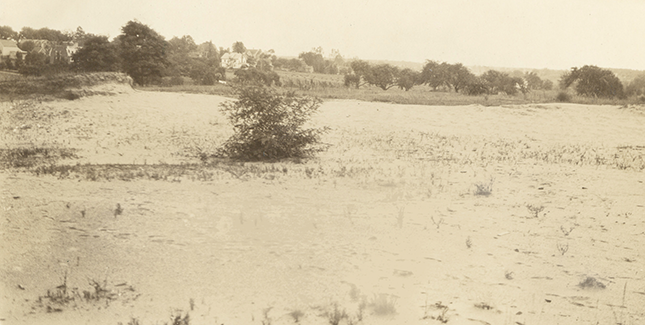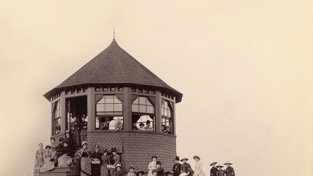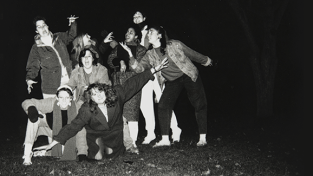MoHome Memories: The Button Field
A Story in the Soil
Across from the College, nestled between Ashfield and Jewett Lanes, observers are confronted with a small street sign for Buttonfield Lane. Long before the houses clustered around the road were built, the area was a small, scrubby field, unremarkable in nearly every way. But this unassuming patch of earth, called a “sand-blow field” by South Hadley residents of old, has a secret—buttons.
Since at least the 1880s, upperclass students at the College would pull pranks on first-year students by telling tall tales of the Button Field. Incredulous students were guided to the field and encouraged to select their own buttons, and even the upperclass students found a use for it, traveling across the street to select buttons for sewing projects.
Some seniors claimed there was a factory that burned down and scattered buttons over the dirt; others tried to convince the younger classes that the buttons sprouted up of their own accord, like weeds. Yet truth is stranger than fiction, and the true story of the Button Field sounds like a real whopper.
Before the construction of Mount Holyoke’s original Seminary Building, much of South Hadley was farmland. One farmer, a Mr. Andrew McElwain, had a rather unorthodox idea for how to fertilize his barren lands—he took his cart down to the Holyoke Paper Mill and asked for their scraps. In the early 1800s, the mill used old rags as a base for their paper. McElwain convinced the mill that giving him their waste was economical for both parties, and he hauled the rags back to his field. As the mill waste decomposed in his fields, his crops reportedly flourished. But the buttons attached to the rags did not decompose, and when he eventually sold the land to the College, the buttons remained in the soil, rising to the surface with the frost each winter to dazzle an unsuspecting first-year.
Though the Button Field was never built upon by the College, it did serve its purposes: during the Spanish influenza quarantine in 1918, bonfires called corn-roasts and bacon-bats were held in the field nearly every evening to make up for the fact that Mount Holyoke girls were not allowed to leave town or receive guests. And a few decades later, as
cigarettes became a common habit for college girls, the area became known as the “Butt-On-Field” due to its popularity as a smoking spot.
—By Rowan Collins ’18
This article appeared in the spring 2017 issue of the Alumnae Quarterly.
April 7, 2017












When I worked at The Orchards Golf Course we used to find buttons in the green side sand trap on hole #11. I was always told about a button factory in the center of town. That appears not to be true, but it is interesting how the buttons ended up in that one sand trap at The Orchards.
Being a native of South Hadley, I am very familiar with this story. In fact, I have a jar of my Grandmother’s buttons in my basement!
Loved the story. Just tad surprised “girls” was used twice and not MHC women…
What a hilarious anecdote–I never knew about Buttonfield, but will seek it out next time I’m on campus!